NUDE DESCENDING A STAIRCASE
The first part of Nude Descending a Staircase is a composition of clips found online that were made by visitors—pilgrims—to the remote memorial site of Walter Benjamin in Portbou, Spain. Each of these individual registrations is anchored in the specificity of the location. They start with the arrival to Portbou, go through the small town up to the cemetery, and end in a dramatic descent down Dani Karavan’s iconic staircase, which was created as an homage to Walter Benjamin. The assembly this audiovisual material transforms the autonomous experiences into one collective trajectory, and entangles collective memory, experience and the production of images.
The second part reveals another staircase, abandoned and barricaded, on a small stage-like platform, outside the former Espai Memorial Walter Benjamin. The second staircase modestly suggests an alternative mode of framing memory.
The title, borrowed from Marcel Duchamp’s 1912 painting, proposes to dialogue Walter Benjamin’s writing on history and reproduction with Duchamp’s attempt—in relation to the developments in photography—to capture movement autonomous from a body.
Nude Descending a Staircase is the first chapter in a series of works titled Gathering Series.
Escaping from the Nazi and the Vichy regimes, the German Jewish philosopher Walter Benjamin (º1892, Berlin), crossed the French-Spanish border and arrived to Portbou, on the 25th of September 1940. Together with a group of exiles like himself, Benjamin followed a smugglers trail through the Pyrenees mountains, with the plan to cross Spain into Portugal and from there to continue by boat to the US, where he hoped to find refuge. Missing one certificate authorising him to leave France, Benjamin was denied entrance to Spain by the Spanish authorities and was threatened to be deported back to France. With the devastating notion he had exceeded all possibilities of escaping his annihilation, Benjamin took an overdose of Morphine pills and died in his hotel room on the night of the 26th of September 1940. It is said that Benjamin was first buried in the catholic part of the cemetery of Portbou under the name Benjamin Walter, due to a confusion made on his death certificate. When Hannah Arendt came to Portbou in search for Benjamin’s place of burial, on her way to the US escaping the Nazis herself, she found nothing. In a letter to Benjamin's close friend Gershom Scholem, Arendt wrote: “It was not to be found; his name was not written anywhere [...]. The cemetery faces a small bay directly overlooking the Mediterranean; it is carved in stone in terraces; the coffins are also pushed into such stone walls. It is by far one of the most fantastic and most beautiful spots I have seen in my life.” In 1945, when the five-years rent contract for Benjamin’s grave-niche in the cemetery of Portbou expired, his body was taken out and moved into the mass grave in the site. This mass grave, as many others throughout Catalunya, is the burial place of anonymous victims of the Franco Regime who found their death during the Spanish Civil War.
In 1994 the Israeli sculptor Dani Karavan (º1930, Tel Aviv) completed his homage-memorial to Walter Benjamin in Portbou titled Passages, after Benjamin's last and incomplete project. The sculpture is located on a cliff, by the entrance to the cemetery of Portbou, and is composed by several sculptural elements. The most profound of which is a long and narrow staircase carved into the cliff that descends towards the Mediterranean Sea. Karavan's sculpture was commissioned and financed by the Government of the Federal Republic of Germany in collaboration with the Government of the Generalitat de Catalunya to mark the 50th Anniversary of Benjamin’s death.
In 2010, Catalan artists Jordi Mitjà (º1970, Figueres) completed his project Forat d’Escala, in which he presented an ongoing documentation of the building process of Karavan’s Passages. Mitjà’s father Heribert, managed the metal construction firm that was contracted to construct Karavan’s sculpture. In his father’s workshop, Mitjà discovered metal remains left from the original construction of Passages. From those, he constructed a new sculpture of a staircase, which he proposes to be the inverse of Karavan’s stairs. Mitjà’s project was commissioned by the Municipality of Portbou for the 70th Anniversary of Walter Benjamin’s death. The work was presented in an solo-exhibition titled Sota l’Escala (Under the Stairs) in Espai Memorial Walter Benjamin, Portbou, in September 2010. Today, Mitjà’s staircase is placed outside Espai Memorial Walter Benjamin, which is officially closed, and is used for storage. (https://www.tilfar.com)
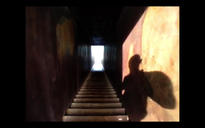
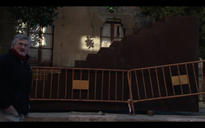
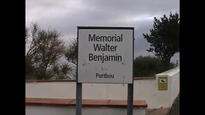
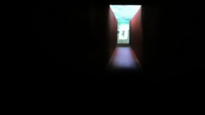
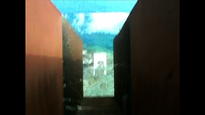
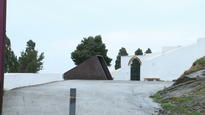
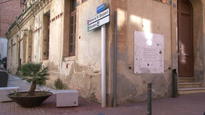
- Format DIGITAL FILE(DIGITAL FILE)
- Color system PAL
- Color col.
- Year 2015
- Duration 00:18:25
- Languageinfo
Subtitles: English UK
Spoken: Hebrew
-
Artists
-
EVENTS